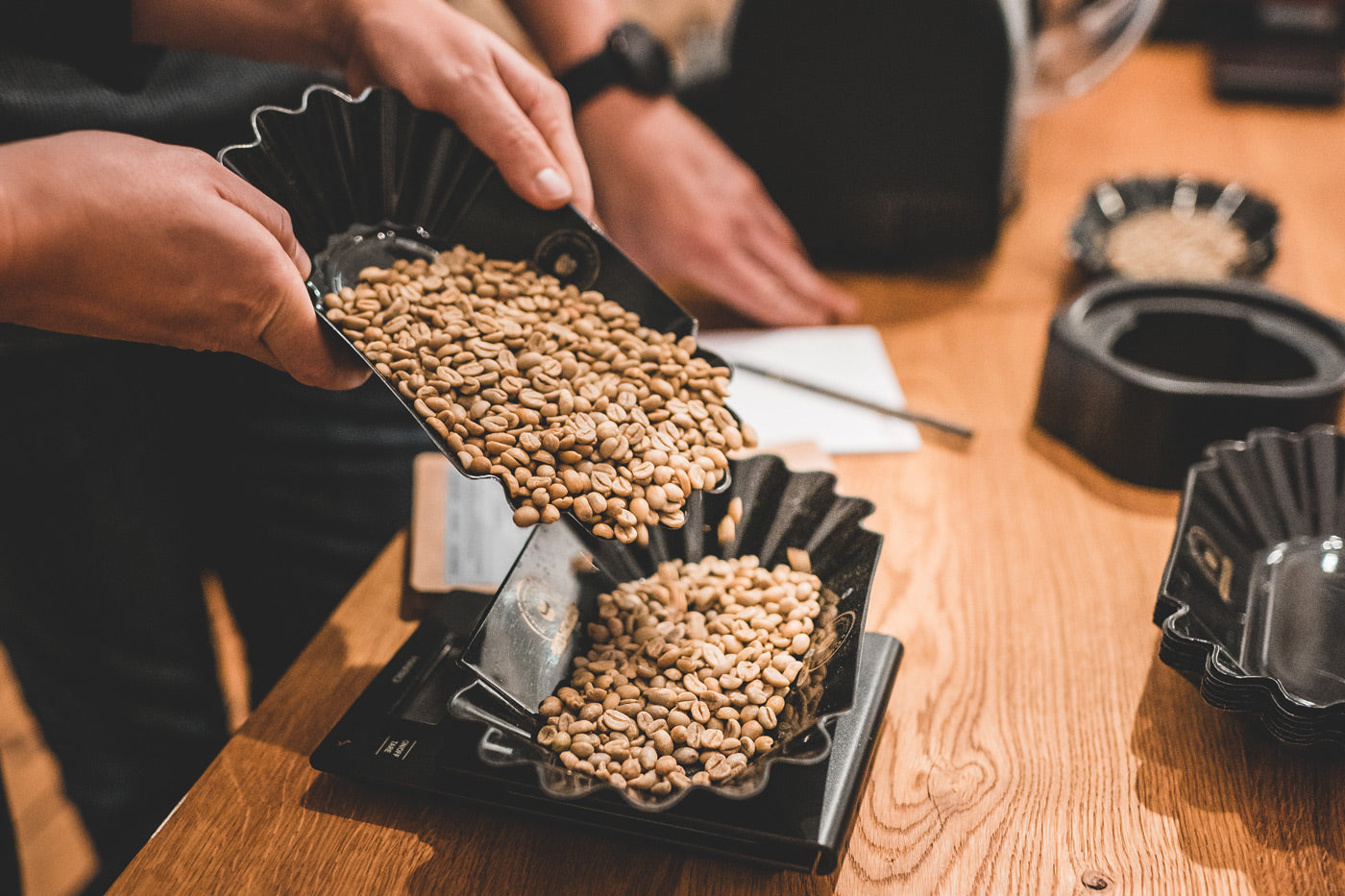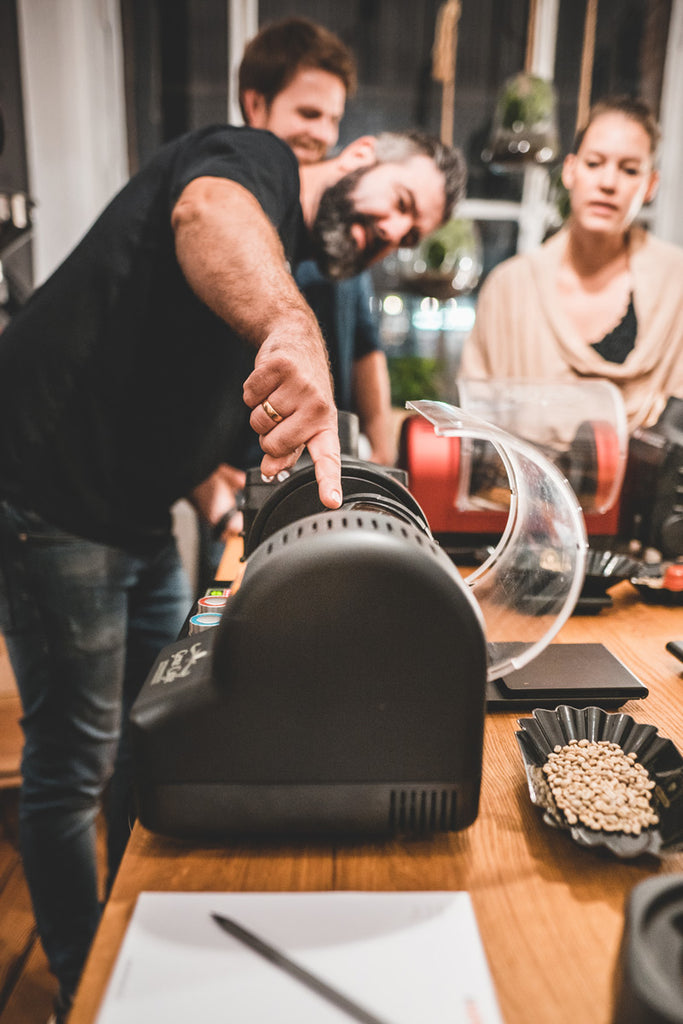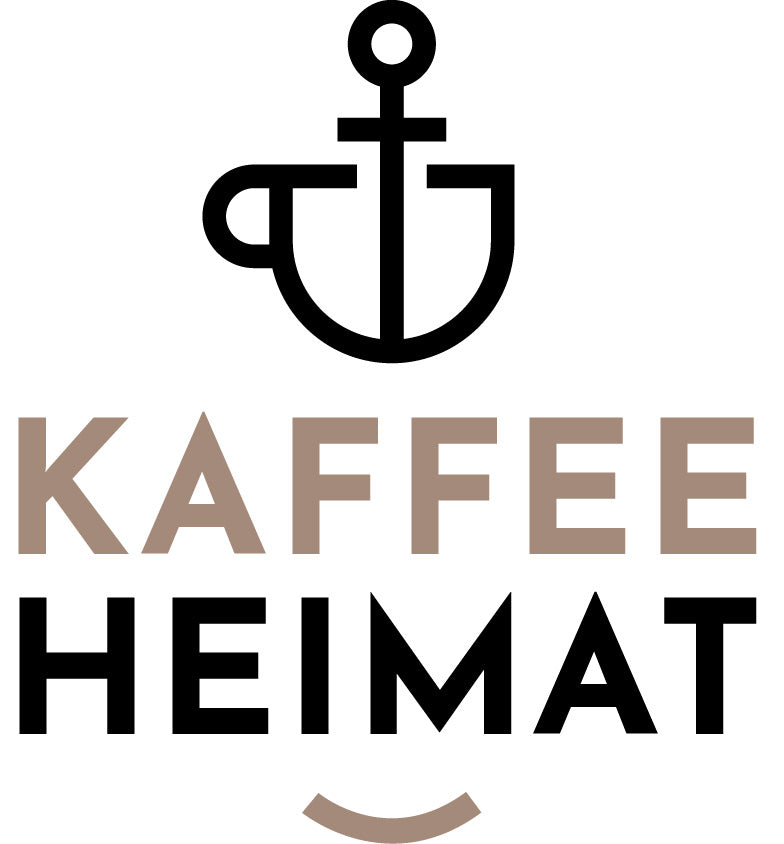
There are numerous coffee roasters in Hamburg. Large roasters such as Darboven and Tchibo are based in Hamburg, as are numerous small roasters.
Why are so many roasters drawn to the Elbe?
This is of course due to the port. It just makes more sense to have a roastery on the water than a coffee roastery on the mountain pasture. The mountain pasture roastery certainly has its charm - but the transport routes for the green coffee are much longer than on the water. So a roastery at the green coffee transshipment point also creates a much better carbon footprint.
Hamburg is the largest transshipment point for green coffee in Europe. An incredible 700,000 tons of coffee are transshipped in the port of Hamburg. At that time, the green coffee was stored in the Speicherstadt - today it is in Veddel or in Wilhelmsburg. Before the Second World War, Hamburg had over 500 small roasting companies. Every corner shop had a ball roaster that it operated in the back room of its shop. The customer brought the green coffee to the shop, then it was roasted and billed.
This is how coffee roasting works in Hamburg today!
Today there are very different roasting companies. The large roasters usually roast using fluidized bed roasting (like a hair dryer), while the small traditional roasting companies such as Kaffeeheimat roast using drum roasting. In general, you can say that drum roasting differs in taste from fluidized bed roasting. With drum roasting, the coffee beans are roasted evenly, slowly and gently.
Unlike fluidized bed roasting, drum roasting allows you to influence the temperature, duration and movement of the beans in the drum.
But even among the small coffee roasters there are big differences.
So try it out - look behind the scenes. Ask the roaster you trust where he gets his goods from, whether he knows his farmers. Ask how long he has been roasting and explain to him how you prepare your coffee.
Espresso or filter, light or dark roast, Aeropress or coffee machine - the more questions you ask, or better yet, the more questions you get asked, the better the roastery.

Our conclusion:
The quality of the green coffee, time, temperature and the experience of the roasting master are the most important variables when roasting. We at Kaffeeheimat have been dealing with the topic of coffee for almost 20 years now.
We know our coffee farmers, travel to the source every year and are committed to local sustainability with people and nature.
Our numerous awards, television appearances as experts or simply good taste speak for themselves.
